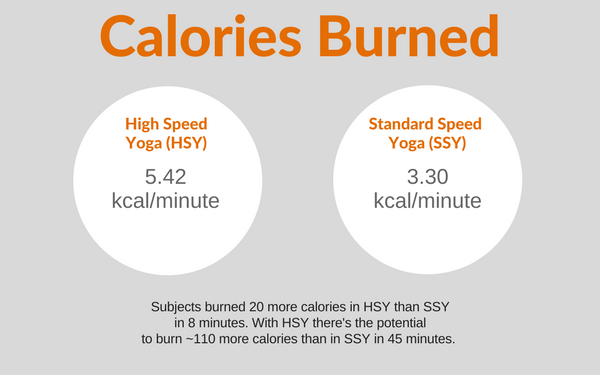What’s This Research About?
This study compared the calorie expenditure and oxygen consumption of
high-speed yoga (HSY) to that of standard-speed yoga (SSY). They wanted
to see if there would be a difference between the two.
They hypothesized that HSY would yield greater energy expenditure (EE) and
than SSY and would also require more oxygen compared to SSY.

TITLE: Differences in energy expenditure during high-speed versus standard- speed yoga: A randomized sequence crossover trial
PUBLICATION: Complementary Therapies in Medicine (an Elsevier Publication)
DATE: October 2016
AUTHORS : Melanie Potiaumpai, Maria Carolina Martins, Roberto Rodriguez, Kiersten Mooney, Joseph Signorile
Energy expenditure: the amount of energy or calories the body needs in order to complete a physical task. Total daily energy expenditure (TDEE) is the total number of calories you burn daily.
Metabolic equivalents (METs): a single MET is defined as the amount of oxygen a person consumes (or the energy expended) per unit of body weight during 1 minute of rest.
Randomized crossover trial: involves repeated observations of the same sequence of treatments over long periods of time as well as randomly assigning interventions to the subjects. It’s said that randomized studies provide high reliability and validity to statistical estimates.
Acronyms:
High speed yoga (HSY): also referred to as power yoga involves taking quicker breaths and performing movements and transitions faster than in SSY.
Standard speed yoga (SSY): the pace of a hatha yoga class in which participants move slower and may take several breaths per pose.

